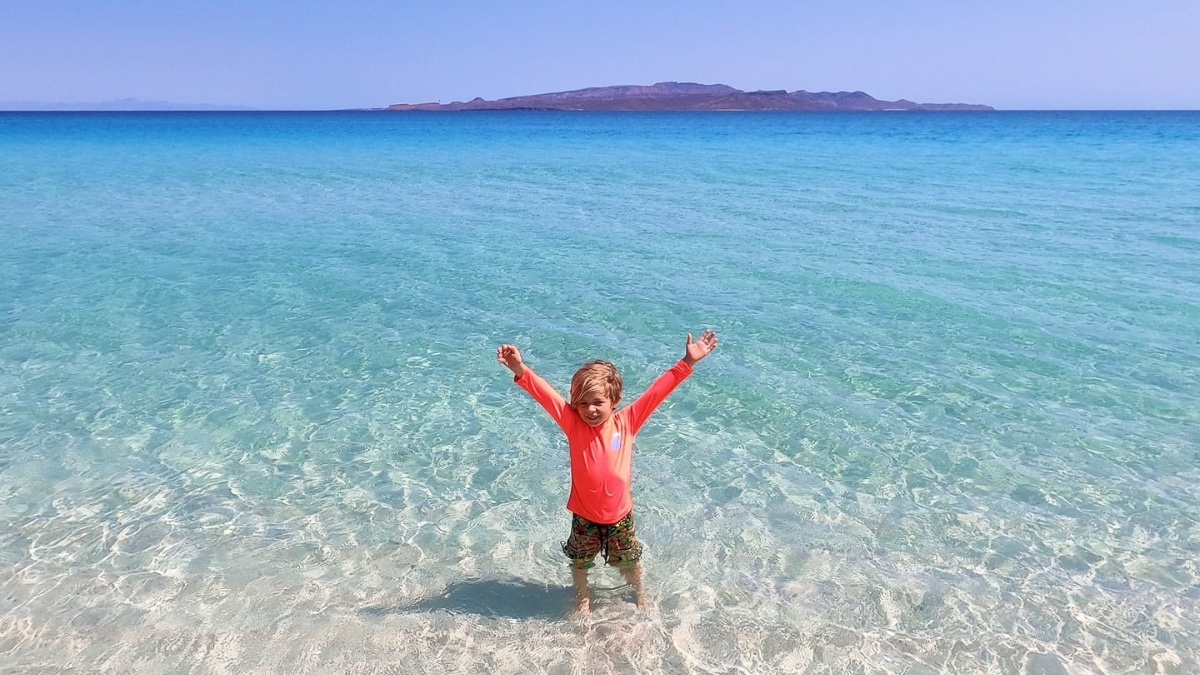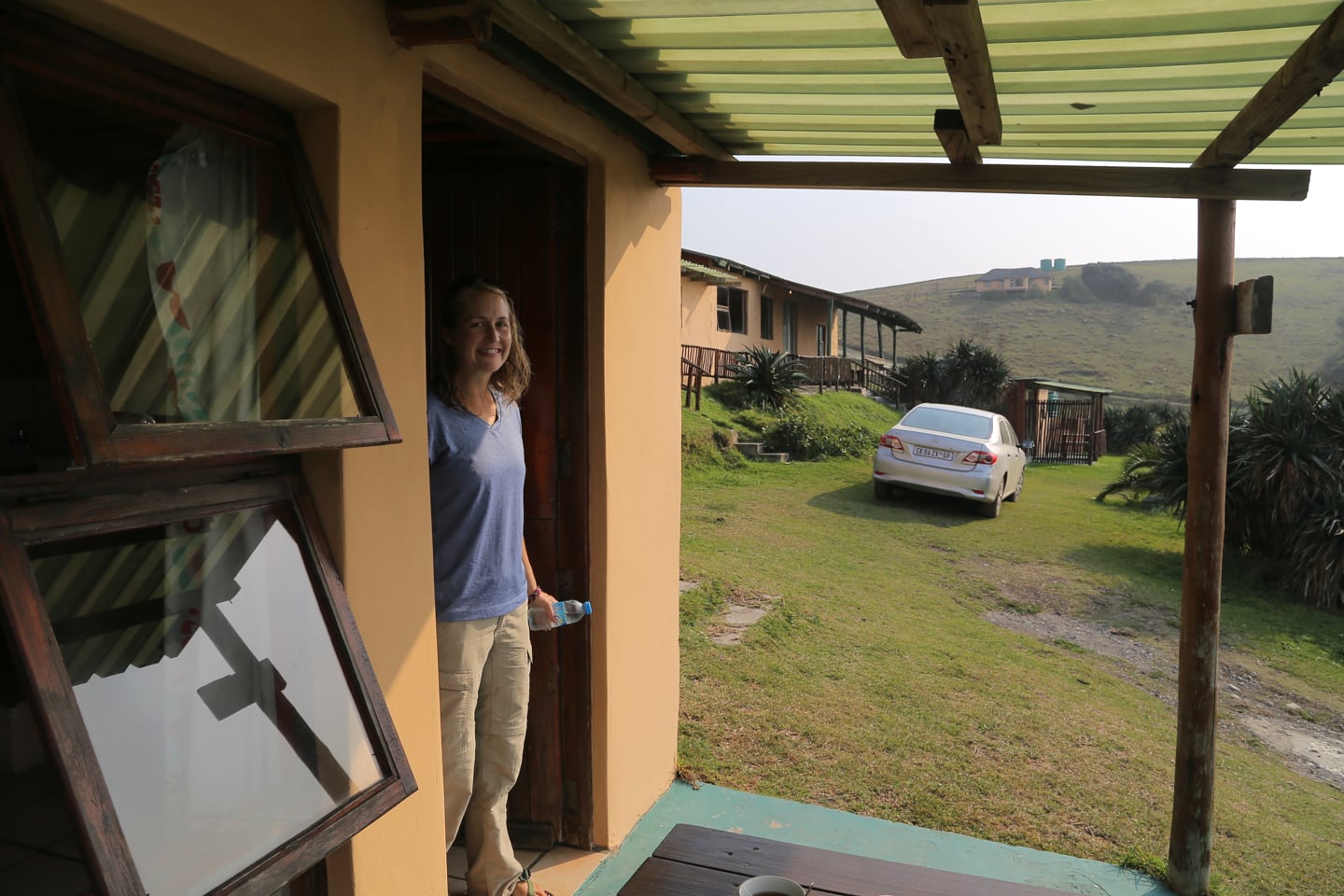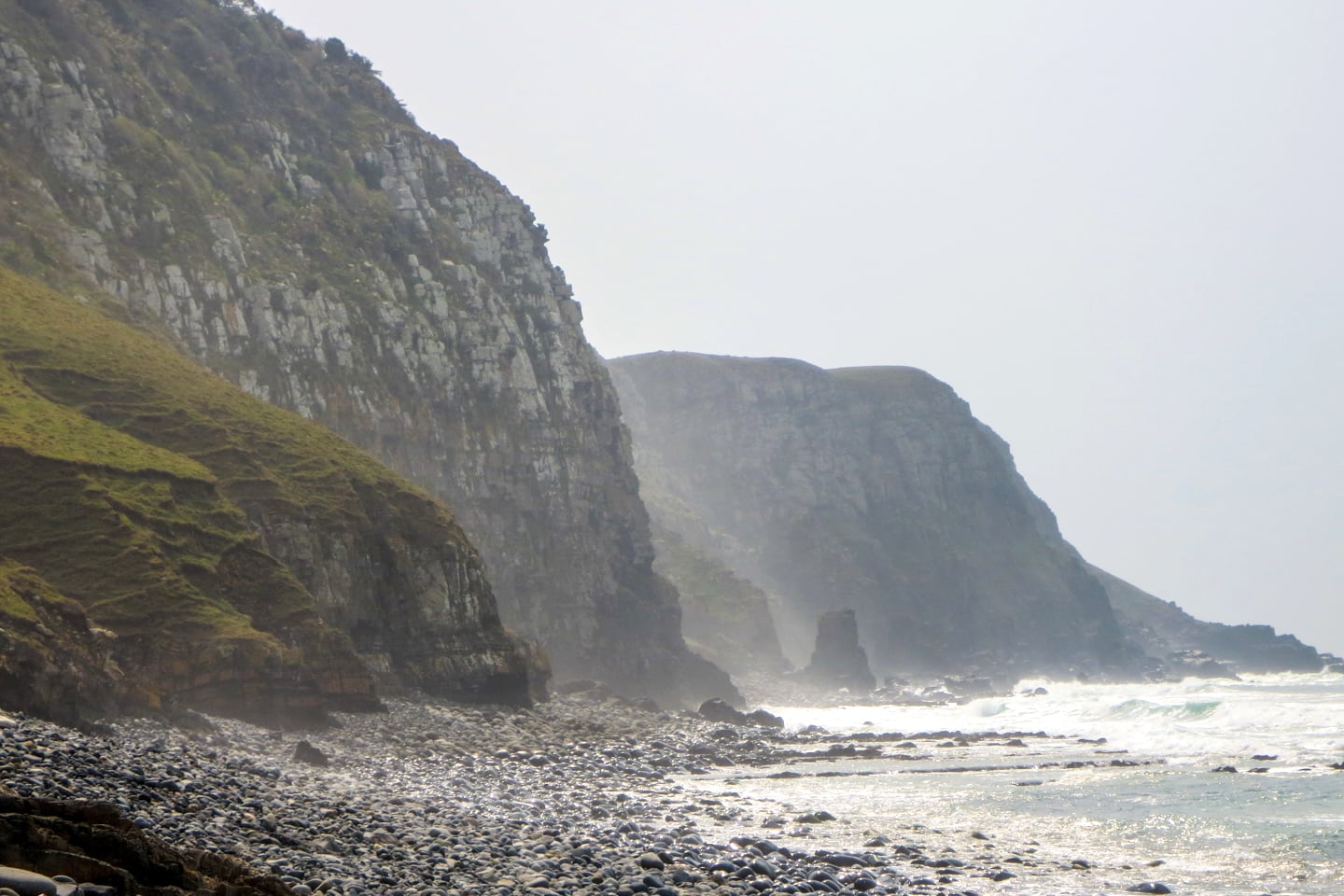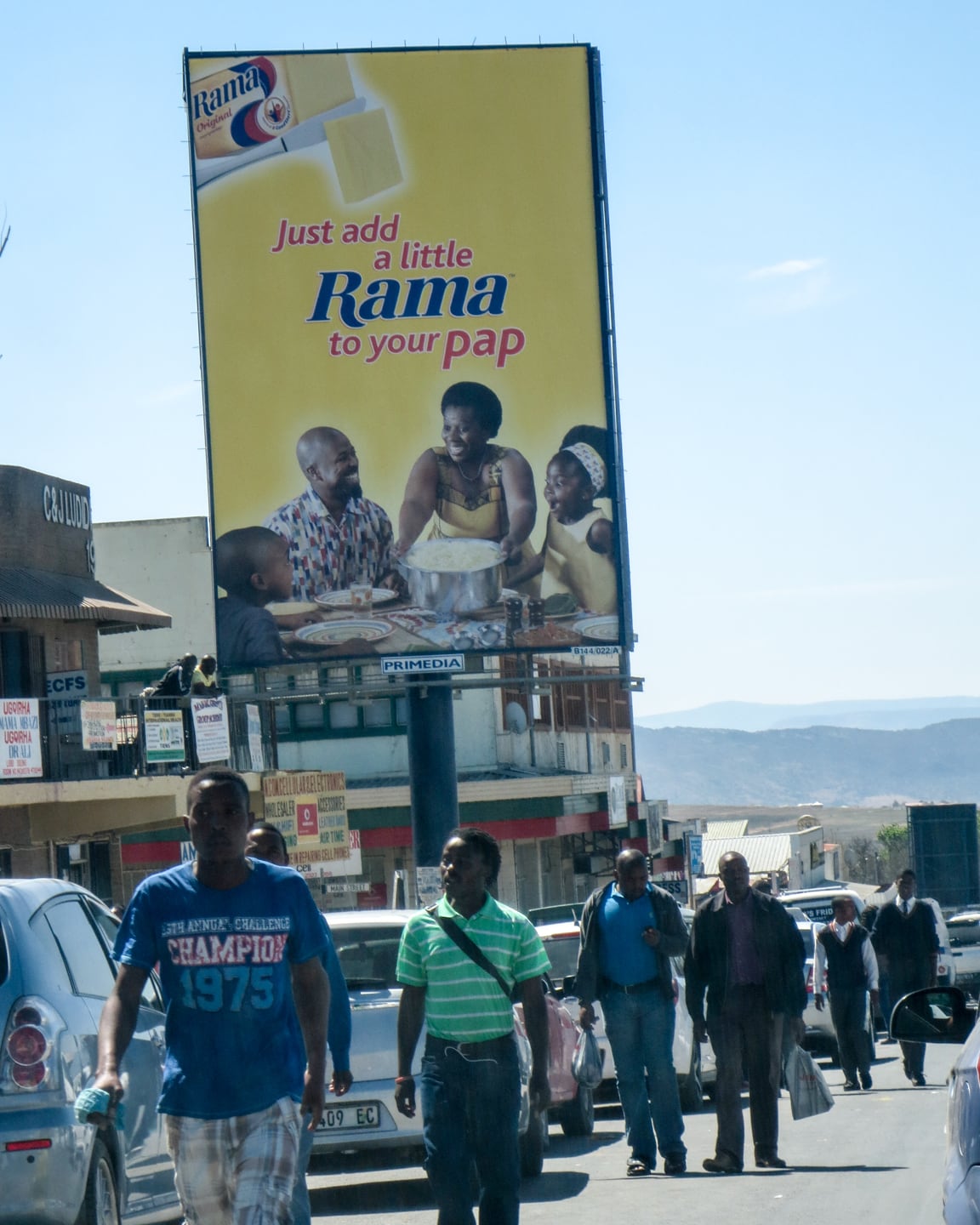
For more on our month-long road tripping adventure through South Africa, start here.
It’s a different kind of world out here. This is Xhosa territory, land of a proud people with a difficult past and a vocabulary that seems to contain as many clicks as consonants. The farther we venture in to the Wild Coast region, the more “African” everything somehow seems; not by accident, but by design, actually.

After leaving the Cape in the 1800s for the hinterland, the Dutch pioneers (or Voertrekkers, as they’re called), established the Boer Republics in the region surrounding modern day Johanesburg. A period of mass resettlement of native Africans followed, in which tens of thousands were relocated to this area.

20 years after the effective end of white colonial rule, the legacy of this resettlement is still very evident as you’re driving through. This partly has to do with the density of Bantu Africans in this part of the country, but also by the fact that the major highways here do not merely skirt towns and cities, but run through the very heart of them.
This was our first taste in South Africa of hoards of people walking in the middle of the highway, pushing carts of produce, leading livestock, strolling, etc. with no regard for vehicles rushing by on the highway. It was also the first time we found ourselves in an overwhelmingly black South African city. This may surprise many readers, but much of the tourist areas of the Western Cape remain very white, and many of the tourist interactions (with the exception of touts/hawkers and housekeepers) remain largely with white folks. That’s not to say at all that places like Cape Town, Stellenbosch or Port Elizabeth aren’t predominately black — the difference in those places, however, is that if you’re hitting the major sights, the true demographic composition of the community is often not evident. Along the Wild Coast, (perhaps not along the coast itself, but on the way to the coast) it is very evident. For Lori, the Wild Coast was the first place in which she felt like she might actually be in Africa, despite the weather still being bloody cold at times.
Before I go any further, I’d just like to add (particularly for my politically-correct-minded American readers) that I struggled with which word to use to describe black Africans in this and other posts. The fact of the matter is that Africa is a huge continent filled with people from a variety of backgrounds, so I don’t use the term “African” to describe only black people. I could call black individuals “Bantu,” but that’s not entirely correct either (and not widely used). Indigenous or native peoples isn’t entirely correct either, because most of then you have a definitional issue on your hand. The San people (or “bushmen”) of southern Africa predate current Bantu peoples, the latter of which have only inhabited much of the region for a few hundred years (and in some places, for much less time), not to mention that the San people were lighter-skin people. All this to say that the most widely accepted descriptor is indeed “black,” so that it what I chose to use in this part of Africa.
Race, it seems, is never an easy topic to write about — even from the standpoint of pure semantics — but one that continues to dominate conversation and social interaction in South Africa. There’s a heaviness to it all, unique to South Africa, that is largely unfamiliar to me, even after having lived, traveled and worked extensively across the continent. It’s difficult to convey to those who haven’t spent time in South Africa and might not have other African countries to compare their experience to. I really admire and respect those individuals who are making real efforts to reach out and engage with all factions of society, despite the uphill struggle. It’s so easy to disengage and avoid such issues altogether, certainly after such a long and painful road, but it’s quite evident such challenges won’t go away on their own.

Yep, that’s our bed and…that’s the ocean there. At night, the sound of crashing waves drowned out even the most loyal guard dog or enterprising rooster and lulled us quickly into a glorious deep sleep. Nights were cool and fresh, but the morning sun warmed us on our front porch as we sipped tea and coffee and munched on the toast, cheese and fresh fruit we had bought on our way in. In the evenings, we sipped wine on the front stoop watching the last light of the day color the sea and sky with a palette neither of us had seen since the days of Fresh Prince’s early music videos. We stayed at White Clay just outside Coffee Bay (on the road to Hole in the Wall) for two nights and it was heavenly.

Self-catering is key in South Africa for budget travelers. While there are certainly deals to be had eating out, you’re far better off preparing at least one or two meals yourself, as supermarkets are very reasonable and most budget accommodation we came across provided kitchens for guests to use. White Clay was special, though, because we had our own little kitchen in our own little slice of paradise.
Salami, fresh avocado and gouda on a multi-grain cracker proved our go-to snack/lunch.




Lori was quite taken by the use of old tires as caps on the mud huts in this part of the country. Admittedly, I had never seen this before, but was impressed by the usage as well. A lot of other places in Africa could stand to try the same method of joining the reed roof to seal it off from the elements and recycle old tires.

White Clay Resort does have it’s own stretch of beach that you can stroll along. There’s a nice access stair case leading from the far end of the property, and the walking trail to Hole in the Wall continues from there. The beach is not made up of sand, but smooth and rounded rocks, like river rock on steroids.


The morning of our full day in the area began with beautiful, bright blue skies, sunshine and warmth we hadn’t felt since Table Mountain. It seemed like a perfect day for a hike, so we set out to cover the 6-7km of trail along the coastline to a small community called Hole in the Wall, which is named after a well-known rock formation there.

Peering back, we could see White Clay Resort, the beach and what I affectionately refer to as the Driveway of Terror, winding from the ridge down into the resort. The driveway is much better than it first appears, as the first 50 meters from the top are by far the steepest and sketchiest stretch. A 4×4 SUV could easily tackle the steep grade and loose/ uneven sections, but we were a bit concerned about mini-red making her way down (and more so, making her way back up again). Actually, I knew she probably wouldn’t have a problem, provided that the pavement stayed dry, but Lori was very uneasy from the beginning about the whole thing…so much in fact that we initially left the car at the top of the ridge and hauled all of our stuff down the long and winding drive to the resort. In the end, the car made it down and back up again without incident, though Lori preferred to watch rather than participate.



The first thirty minutes of the hike were very enjoyable. The trail wound around windswept hills facing the sea, offering stunning views from every angle. Unfortunately, our hike abruptly came to an end when we were visited by a young local man who began talking to us and then walking in front of us. Despite the fact that this is a widely known independent walk covered by several visitors a day, to the point that most guesthouses in the area don’t even offer the option of a guide, this individual insisted that we would need a guide and would get nowhere without his help.
I’ve been here a hundred times, it seems: You don’t want to be rude because you don’t know what his intentions are, yet you really just wish to amble along on your own, though on the other hand this guy might only be trying to make a few bucks to feed is family, but then again, if you end up paying him when you never asked for a guide in the first place, it only perpetuates the stereotype that white people are nothing but a source of income and motivates the guy to rope the next hikers into paying for a guide they never asked for.
Finally, after walking behind the guy for a while, trying to pass him to see what he would do, and realizing his true intentions, I politely informed the guy that we are very grateful for his assistance but do not wish to take him away from his work or family and feel confidant that we can find our way just like everyone else. He then began asking for laughable sums of money and I politely told him we never asked for his assistance and that next time he needs to ask ahead of time (I knew he wouldn’t, but it’s a nice thought that he might take my suggestion to heart…)
Then things got interesting and we found ourselves virtually in the middle of nowhere with this guy who was becoming markedly agitated and spouting remarks that might be construed as threats in a language he had little mastery of. When things got really heated, Lori and I made the tough decision to politely disagree, turn around and high-tail it back to the resort, effectively ending our hike. Fortunately, he decided to go on his way and not to follow us back, but the exchange left me paranoid for the rest of the walk back.
When we returned to the lodge, we informed the owner (a white South African) of our experience and he was very surprised. He appeared to believe us, but assured us that this was extremely rare. Just our stupid luck, I guess.

The whole thing made me frustrated for the rest of the day.
We had dealt with similar situations in India and in South Africa to a certain extent, but I still was trying to figure out how to appropriately address such situations here. It’s difficult because my baseline knowledge of the various cultural groups in South Africa is far lower than in other African countries where I’ve worked and lived. In some places, such as Mozambique, its not uncommon for folks to go out of their way to lead you somewhere simply for the sake of hospitality, a sign of goodwill or because they are proud of their homeland. 99% of the time they would ask for nothing in return (and have even passionately turned down payment the few times I offered), but not in South Africa.
Unfortunately, we met very few black folks in the city or countryside — people, by most accounts, better off than their Mozambican counterparts — who initiated interactions with us and didn’t see us merely as a mealticket. We frequently watched as such individuals would pass a half dozen affluent-looking black South Africans as they bee-lined their way over to the two of us to ask for money, a meal or anything else. I asked a few of them why they didn’t ask their well-to-do South African brethren first and received only blank stares as if I were crazy.
Obviously there are a slew of possible reasons for this behavior which seems to be so automatic and so entrenched in South African cultures — likely rooted to a large extent in the Apartheid system, but perpetuated by many foreign aid schemes and feelings of White Man’s guilt/burden by white visitors, but I’d rather not delve too deeply into all of that. I really did want to give this guy the benefit of the doubt, but by doing so, I stepped right into his plan.

The hike may have been a wash, but our spirits were buoyed when we rounded a corner of the trail and encountered these two sheep, who apparently had been very interested in our conversation.

The rest of our time in the Coffee Bay area passed without incident. We decided to walk into town, instead, and see what we could see before the weather changed (it was now threatening to storm).

Later that evening, the skies cleared just as the sun was setting — ending the day on a high note.





As often happens, the morning we were preparing to leave greeted us with the bluest skies we had seen in a while.


We packed up the car and begrudgingly made our way inland. We had spent nearly three weeks along the coast in South Africa and it was time to bid farewell. Today would be the last we’d see of the ocean until Mozambique.



“Welcome to China Mall!”

Lori’s favorite South African billboard. Butter does make everything awesome…especially grits (the little girl’s expression is priceless).




